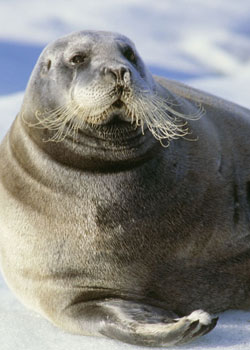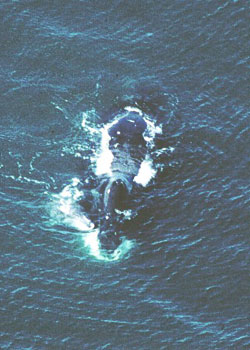The challenge
The Arctic Ocean, with its thick blanket of ice and months of darkness, has long been one the planet’s quietest places. But climate change is bringing rapid changes – faster here than almost anywhere else on Earth. Ice-free periods are growing longer and longer and the ice itself is growing thinner.
The Intergovernmental Panel on Climate Change says ice-free Arctic summers could happen once every ten years if warming goes unchecked and temperatures increase by 2 degrees C. It adds that prolonged warming could even result in an Arctic Ocean that is ice-free year-round.
These conditions raise many concerns for Arctic mammals such as whales and seals. For starters, their environment is getting noisier. With less ice, wave and wind noise is increased. This could make survival more difficult as sound used for group communication, navigation or finding food are lost within higher ambient noise levels.
But the biggest change is likely to be a sharp increase in ship traffic through the Arctic as freight carriers look for a shorter route between Asia and Europe, ships service new mines on the Arctic coast, and tourism operators exploit an interesting new – and newly accessible – destination.
Ships bring many impacts, including noise, pollution threats (from leaks or accidents), and the possibility of collisions with slow-moving whales. These sorts of impacts are already being seen with right whales in the Atlantic and orcas in the Pacific. To avoid a replication of these problems in the Arctic, Canada needs to be better prepared for a major increase in shipping through what are still remote and often ice-filled waters that also teem with marine life.




What we are doing and why
WCS Canada’s Arctic research team has been carefully studying the potential impacts of ship noise on arctic marine mammals in the Beaufort Sea. Using underwater sound recording equipment, we have been both quantifying the amount of noise generated by passing vessels and looking at the potential impact of this new noise source on whales and seals.
Sound travels further underwater than in air, and consequently we have found that ship noise can be detected as much as 100 km away. Our studies indicate that even when ships are as much as 50 km away, their noise can have a significant “masking” effect on sound use by whales.
We have used this research to point to proactive steps that can be taken to protect whales and other marine mammals before ship traffic increases, including slowing ship speeds, changing shipping routes to avoid high whale concentration areas, and requiring human spotters when passing through whale-rich areas.
Our team has also been working with local Inuit communities in the Inuvialuit Settlement Region communities to study seal diets and health, including exposure to contaminants. We have helped to establish a Community-Based Monitoring program that can help to inform local wildlife management and community decision making.
Our strategies
We have published a number of papers on the potential impacts of noise on Arctic marine mammals and how these impacts could be mitigated. We are strongly encouraging the federal government to be proactive in improving protections for marine mammals by shifting shipping routes away from areas heavily used by whales, imposing strict speed limits in areas with high whale concentrations, and improving tracking of vessel traffic in the Beaufort Sea.
We are also working with our international colleagues to address noise increases in the Arctic. We recently completed a global assessment of noise in the Arctic marine environment for the Arctic Council’s PAME (Protection of the Arctic Marine Environment) working group. This is being used to find international solutions to address increasing noise in the Arctic.
Latest news